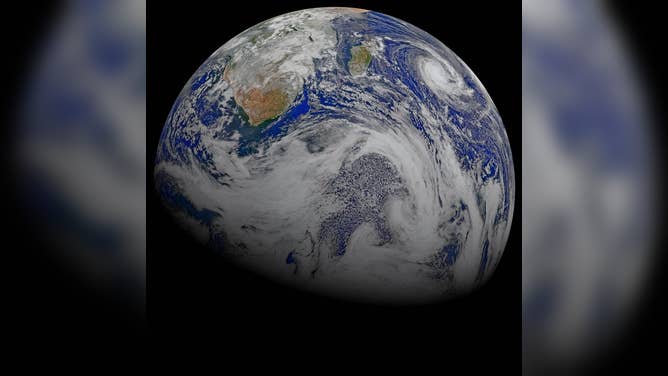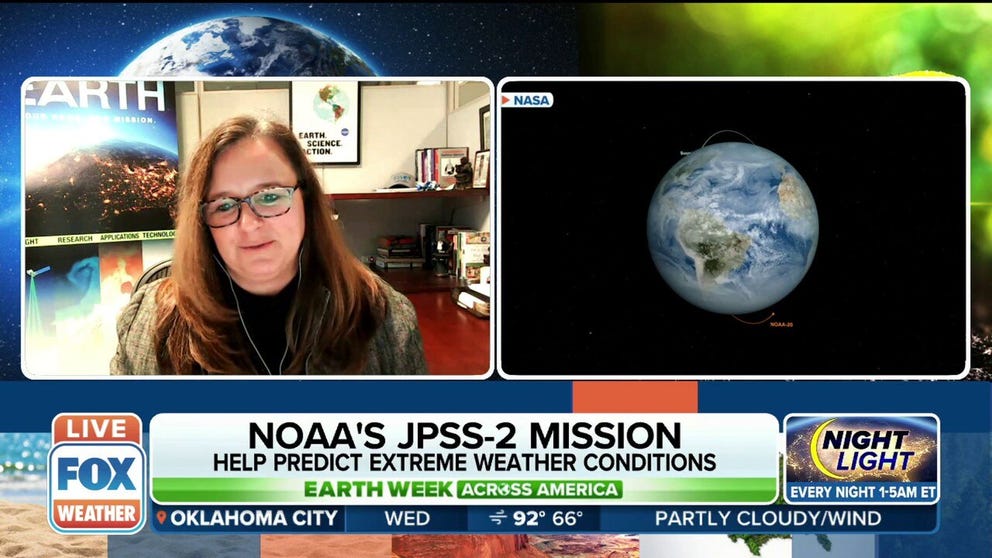NASA's next Earth missions will monitor extreme weather, take first global survey of surface water
4 NASA Earth science missions are launching in 2022

This composite image of southern Africa and the surrounding oceans was captured by six orbits of the NASA/NOAA Suomi National Polar-orbiting Partnership spacecraft on April 9, 2015, by the Visible Infrared Imaging Radiometer Suite (VIIRS) instrument. (Image: NASA's Goddard Space Flight Center)
(NASA)
NASA has four more missions launching this year to gather essential data about our planet, from sea ice to air quality and weather.
NASA Earth Science Division Director Karen St. German told FOX Weather that while most people associate the space agency with studies of other worlds and space, NASA is just as focused on studying our home planet.
Currently, there are 24 Earth-science missions in orbit, and NASA will be launching four more by the end of 2022.
"The observations from these missions feed modules and research that really increase our understanding of how the Earth is evolving and predict how that change will continue in the future," St. German said.
Tour of Earth from space: NASA to launch four Earth science missions this year
NASA has four Earth science missions launching in 2022: A look at how each of those will help us learn more about our changing planet and improve forecasting.
Viewing Earth from 200 or even 20,000 miles above the planet has advantages, says NASA Chief Scientist and Climate Advisor Katherine Calvin.
"We use our unique vantage point of space to see the Earth, and we can see things like vegetation, carbon dioxide, clouds and precipitation changes in the massive ice sheets and much more," Calvin said. "We've been observing the Earth for decades so we can see not just what it looks like today but also how it's changed over time."
Already this year, NOAA and NASA's newest weather satellite, GOES-18, launched from Cape Canaveral on March 1 and later reached its home 22,236 miles above Earth. The satellite will track hurricanes, wildfires and provide advanced warnings for tornadoes and give advanced warnings of incoming space weather caused by solar flares.
THE MORE YOU GOES: 7 THINGS TO KNOW ABOUT NOAA'S NEW WEATHER SATELLITE
This summer, Astra will launch a constellation of small NASA satellites known as CubeSats under the TROPICS mission.
"It will be making lots of rapid measurements of the thermodynamics of tropical storm systems, and this will increase our understanding of how they work and the processes that drive significant and rapid evolution of tropical storms in their structure and intensity," St. German said.
Working together, the six satellites will provide more frequent information about precipitation, humidity and temperature of tropical storms.
"We're hoping to learn more about how tropical cyclones work and what's going on in those," Calvin said. "It'll help us both as scientists understand the storms and have a better sense of how they are changing and evolving, but also provide information to weather forecasters."
This fall, NOAA and NASA are preparing to launch the third satellite in the Joint Polar Satellite System series, JPSS-2.
NOAA's JPSS-2 mission will help predict extreme weather conditions providing a holistic view of how Earth's systems work together. The satellite will provide data to help forecasters track climate change.
JPSS-2 is scheduled to launch in September from California.
At the end of the year, NASA's SWOT (Surface Water and Ocean Topography) mission is scheduled to launch to low-Earth orbit, providing the most precise measurement of Earth's water from its oceans, lakes, wetlands and all bodies of water.
SWOT will help scientists understand the impacts of climate change, including the ocean's ability to absorb heat and carbon dioxide.
"Oceans play a really important role in climate change. They absorb heat, and they absorb carbon dioxide, and how much more they can absorb depends on how much they circulate," Calvin said. "SWOT is going to give us information about that. So how much do the oceans mix and give us a better sense of how much more carbon and heat can go into the ocean in the future."
Data from the spacecraft will help farmers manage irrigation, including when to water their crops and how much is needed.
SWOT will help western states dealing with drought, lack of snowpack and low reservoirs to know how much water they have. St. German said coastal communities facing flooding due to sea-level rise would also have SWOT information to help them prepare.
SpaceX will launch the spacecraft from California in November.
Beyond 2022, NASA is currently designing its Earth System Observatory, a set of satellites that will work together to provide a 3D holistic picture of Earth.
The first spacecraft of the Observatory is called NISAR (NASA-ISRO Synthetic Aperture Radar) and is a collaboration with the Indian Space Research Organization. Using two radars, the spacecraft will show changes on Earth's surface like ice sheets and landslides. A launch vehicle or date has not been set for that mission.
